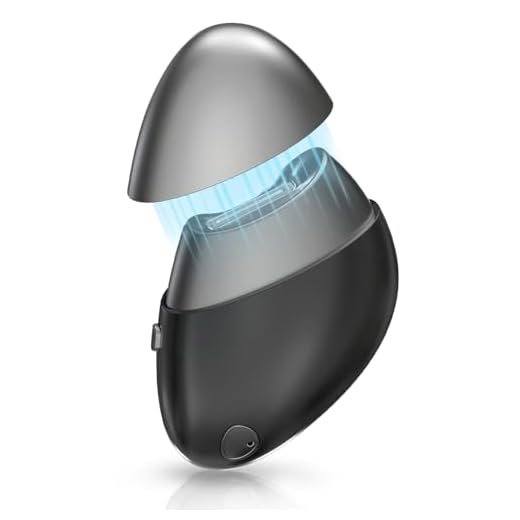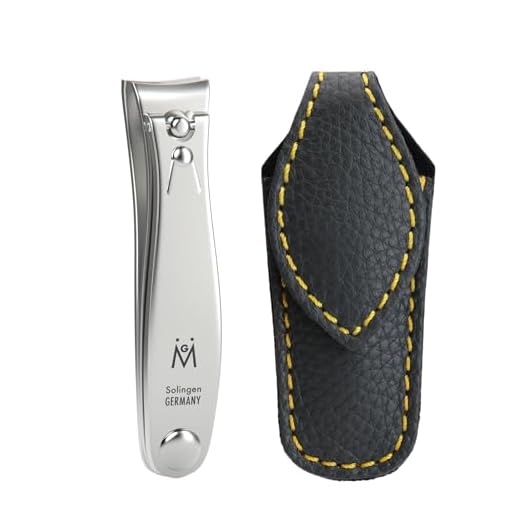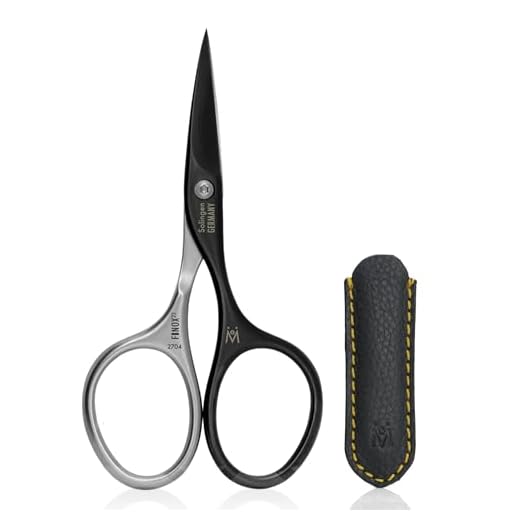





Nail clippers and similar implements are generally permitted in carry-on bags, but regulations often vary by airline and country. It’s advisable to check specific policies before packing, as some security agencies may impose restrictions based on the design and size of the tools.
For most airlines, standard-sized nail trimming devices fall within the allowed items. However, sharp or pointed objects could raise concerns during security screening. To avoid any inconvenience, consider selecting options that feature rounded tips or are designed specifically for travel.
Always verify the current regulations of the airport and airline prior to your flight. Being informed about the latest guidelines ensures a smoother travel experience and prevents any last-minute complications at the security checkpoint.
Can You Bring Nail Scissors in Hand Luggage?
Travelers are permitted to carry small cutting tools with certain restrictions. Check airline policies to confirm the size limits on sharp objects. Generally, scissors with blades shorter than 4 inches are acceptable, while larger ones are likely to be confiscated.
Here’s a quick review of regulations for cutting instruments on airplanes:
| Item | Acceptable Size | Allowed |
|---|---|---|
| Cutting Instruments | Blades shorter than 4 inches | Yes |
| Cutting Instruments | Blades longer than 4 inches | No |
For optimal travel experience, store these items securely. If in doubt, consult the specific airline or relevant transportation authority for the latest updates on carry-on policies before departure.
Airline Regulations on Nail Scissors in Carry-On Bags
Most airlines prohibit items with blades longer than 4 inches in the cabin. Nail clippers are generally exempt from these restrictions, but scissors present a different situation. Check specific carrier policies as some allow scissors with short blades, while others may ban them entirely.
General Guidelines
It is advisable to keep the blade size under 4 inches to improve the chances of passing security checks. Always store sharp instruments in a protective case to prevent accidents or damage to other items in the bag.
Checking Local Regulations
Different countries and airlines may have varying rules regarding sharp instruments. Ensure to review airport and airline guidelines before travel. In some regions, security personnel have discretion and might confiscate items deemed dangerous, regardless of official regulations.
Differences in Security Rules by Country
Regulations regarding small cutting tools vary significantly across nations. Knowledge of specific rules can prevent confiscation at security checkpoints.
North America
- In the United States, sharp items with blades longer than 4 inches are restricted on flights. Shorter implements are typically allowed in carry-on bags.
- Canada follows a similar guideline, permitting items as long as they are under the specified length limit.
Europe
- Most European countries allow small blades under 6 cm (about 2.4 inches). However, individual airline policies can impose stricter regulations.
- In the United Kingdom, allowances align with European norms, but travelers should confirm with their specific air carrier.
Asia and Oceania
- Australia prohibits all implements with blades on domestic flights, while international flights may have different allowances based on the destination country.
- In Japan, similar size restrictions apply. Priority is given to passenger safety.
To avoid issues, review the specific airline’s guidelines and the country’s regulations prior to traveling. Compliance with local laws can differ, and airlines may enforce stricter rules than those outlined by national regulations.
Recommended Sizes and Types of Nail Tools for Travel
Opt for compact models with blade lengths no longer than 3 inches. This dimension is manageable and fits within carry-on restrictions.
Types of Nail Tools
Choose pointed-tip clippers for precise control on small areas, while curved-tip versions help in achieving a rounded shape. Safety scissors with rounded tips are ideal for those prioritizing safety in packed environments. Consider foldable options which can minimize storage space while maintaining functionality.
Material Considerations
Stainless steel versions offer durability and resistance to rust, ideal for travel. Plastic variants are lightweight and can be easier on the budget, but ensure that quality remains high to avoid breakage. Pay attention to the hinges; a smooth action is preferable for efficiency during use.
Potential Confiscation Scenarios at Airport Security
Items such as small cutting tools can sometimes be confiscated at airport checkpoints, depending on specific conditions. For those traveling, it is recommended to ensure that these instruments meet size restrictions. Generally, security personnel may confiscate any tool with a blade exceeding 4 inches in length. Consequently, keeping measurements within this limit reduces the likelihood of seizure.
Another common scenario involves the design of the tool. Items that appear sharp or menacing, regardless of their actual intent, can attract scrutiny. Tools with pointed tips may be viewed as potential threats, leading to removal from baggage. Selecting rounded-tip versions when possible can enhance acceptance rates.
Variations in policy exist not only by country but also among individual airports. Frequent travelers should familiarize themselves with specific regulations at their departure points to avoid unexpected conflicts. Policies may shift based on heightened security measures, especially during peak travel seasons.
To ensure continued compliance, consider opting for disposable alternatives or travel-safe kits designed for portable grooming. This approach may further decrease the chances of confiscation.
For additional insights into maintaining cleanliness in travel contexts, refer to resources such as how to clean a stray cat.
Alternatives to Nail Scissors for Travel
Opt for a travel-friendly nail clipper instead of traditional cutting tools. These compact devices are typically permitted in carry-on baggage due to their safer design. Look for models with rounded edges to minimize potential risks.
Consider using a nail file, particularly glass or crystal versions, as they provide smooth results without cutting. They are lightweight and can easily fit into your personal item. Such options are usually accepted by security checks.
Additional alternatives like multi-tools can also serve as handy replacements. Many have nail care functions while being categorized as permissible under various airline regulations. Ensure that the tool complies with size restrictions, which usually allow blades under a certain length.
If you’re looking for convenience, manicure kits specifically designed for travel contain all necessary items while adhering to security guidelines. Kits often come with files and small clippers that fit easily into your bag.
Lastly, for in-flight personal care, keep in mind that some airlines provide grooming kits on longer flights. Check with your carrier to see if this service is available, saving you the need to pack your own items.
For an unexpected event while traveling, having a backup plan is smart. Consider the best umbrella insurance carriers to safeguard against potential disruptions.
Tips for Packing Nail Care Items in Carry-On Bags
Opt for compact nail tools to minimize space and comply with regulations. Choose travel-size nail clippers and miniature files, ensuring they fit within size restrictions.
- Consider a multi-tool that includes a nail clipper; these are often permitted.
- Soft-sided cases can secure items without adding bulk, maintaining organization.
- Avoid glass files, as they can break easily during travel. Opt for metal or sturdy plastic alternatives.
Check with airlines for specific restrictions on sharp items to prevent confusion. Have all items readily accessible during security checks to expedite screening.
Utilize packing cubes to separate nail care tools from other hygiene products for efficient unpacking and repacking.
For convenience, consider investing in a best temu backpack that accommodates all your care essentials while keeping them organized and secure.
Before your trip, review local laws, as regulations regarding personal items can differ significantly. Familiarize yourself with prohibitions to avoid last-minute surprises.







